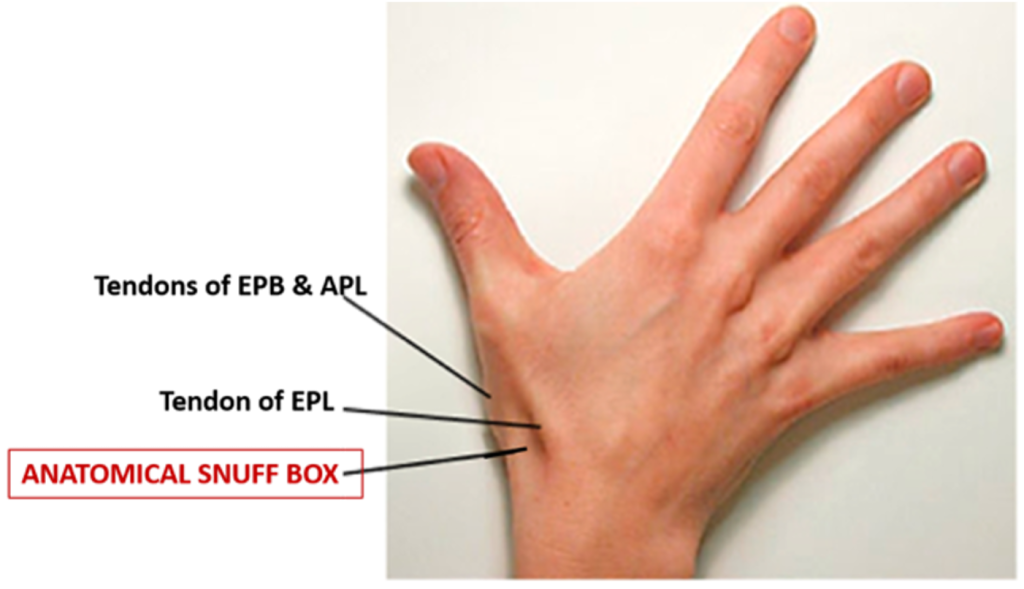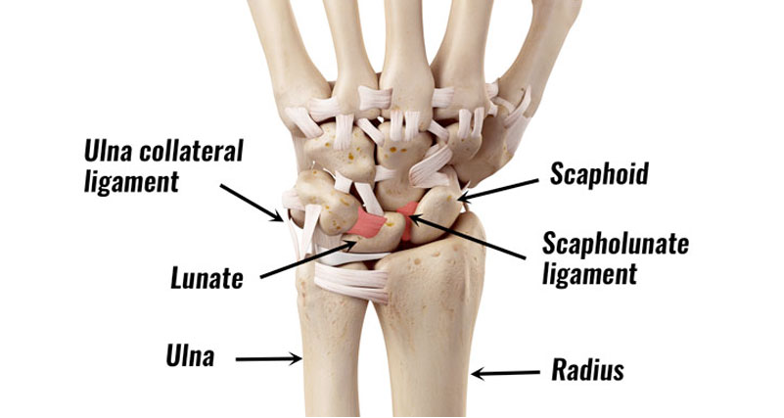Common Wrist Injuries After a Fall
Ouch! Fell on your hand? Falling on an outstretched hand is a common injury that happens in everyday life. But now your wrist is swollen and painful. Let’s have a closer look on what could be going on.
When you fall on your hand, two common injuries can happen:
- Fractures – when one or more bones in your wrist break
- Ligament sprains – when the tough band holding your wrist bones together stretch or snap.
Fractures

1. Radius
The most common wrist fracture happens at the radius, one of the two forearm bones. If your wrist looks bent like a dinner fork, you might have a Colles’ fracture. You could expect a lot of pain, swelling, and trouble moving the wrist.

2. Scaphoid
The scaphoid, a wrist bone in between the thumb and radius, is often fractured along with the radius. If you feel pain after a fall in the ‘anatomical snuffbox’ (a small dip at the base of your thumb) when you stretch your hand, it may be a sign of a scaphoid fracture.
This fracture can be easily missed because it doesn’t always show up on X-rays immediately. That’s why even if your X-ray is clear, it’s important to follow up with your doctor if there is persistent pain days after the fall to avoid complications.

What to do if you suspect a fracture?
How can physiotherapy help with fractures?
Physiotherapy can help you recover from a wrist fracture. Here’s how:
- Early Stage (while in a cast/splint): Focus on reducing pain and swelling, plus gentle exercises for your fingers, elbow, and shoulder to prevent stiffness.
- After the cast comes off: Exercises help restore wrist and thumb movement and flexibility.
- Strengthening Phase: As you get stronger your physiotherapist will guide you through grip strength and coordination exercises.
Ligament Tears

- Scapholunate ligament
The scapholunate ligament (SLL) connects the scaphoid and lunate bones and keeps them aligned. With all the extra weight going through your wrist in a fall, the SLL can tear, causing pain and instability. - Radial collateral ligament
The radial collateral ligament joins the radius with the wrist bones. Since the radius often takes the impact during a fall, this ligament is also at risk of injury.
How can physiotherapy help with ligament tears?
- Early Stage: You may need a brace or splint to allow the ligament to heal. The focus is on reducing swelling and pain.
- Movement Stage: Once healing starts, physiotherapy helps restore movement and prevent stiffness.
- Strength & Stability Phase: Exercises target surrounding muscles to strengthen the wrist and prevent future injuries.
Whether it’s a fracture or a ligament injury, don’t ignore wrist pain after a fall. Early treatment speeds up recovery and helps you get back to doing what you love! Recovery takes time, but physiotherapy supports you every step of the way.


